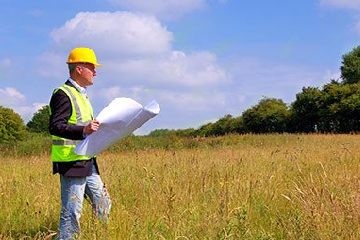The due diligence involves digging, sometimes twice – once each for environmental Phase II probes and geotechnical investigations. Digging once is a hassle enough with lots of requisites to fulfill and digging twice means double the ordeal. However, the outcomes justify the effort.
Geotechnical drilling help evaluate the suitability of the soil for an ensuing project while Phase 2 ESA digging is all about assessing the environmental liability on the given site. However, the differences don’t end there, as the methodologies and protocols involved also vary accordingly.
Let’s elucidate how Phase II ESA drilling differs from geotechnical drilling.
Phase 2 ESA Digging:
Environmental Site Assessment (ESA) involves two sequential phases, Phase 1 and Phase 2. In case, the Phase 1 ESA report claims to spot a Recognized Environmental Condition (REC), the Phase 2 ESA is undertaken at the client’s will. REC is an environmental hazard, significantly impacting the worth of the property. It can be any hazardous substance that’s either already releasing into the environment or could release into the environment anytime in future.
Objectives:
Phase II ESA typically investigates the soil and soil gas in the subsurface to get hold of sources of environmental hazards that went unidentified in Phase 1. Groundwater, asbestos, and lead can also be analyzed, subject to the findings of Phase 1. In lack of specific knowledge of the hazards present in the subsurface, the buyer is susceptible to risks. Phase II ESA investigations pave way for the implementation of risk mitigation strategies against identified contaminants. This hedges the buyer against significant costs and environmental liabilities in the long term.
How it’s done?
Phase 2 ESA is all about teamwork, requiring licensed geologists and engineers specializing in Phase 2 Environmental project design. The digging is done in line with the ASTM E1903-11 parameters though, the professional judgment also matters across the board, from pre-digging to the final report. The scope of digging is project-specific, depending on the number of samples required, types of hazards to be identified, the type of drilling and other factors. The team opts for an appropriate drilling method for Phase II ESA based on the objectives and scope.
Hollow Stem Auger: It’s the oldest of all drilling techniques, tried and tested for water-producing areas. A tiny, manoeuvrable rig with a hollow stem is utilized to either sample the groundwater or set up subsurface wells to monitor groundwater.
Cone Penetration Testing (CPT): The method involves pushing a cone penetrometer into the subsurface to assess the soil characteristics, delineate soil stratigraphy, and identify contaminants present. CPT is done in conformity to ASTM Standard D 3441.
Rotary Drilling: A razor-sharp drill bit makes its way into the subsurface by applying downward pressure, and works best for soft sediments with or without groundwater.
Push probe: A direct push instrument is forced into a subsurface through hammering. It’s a quicker, easier and economical way of sampling soil, soil gas, and groundwater.
Hand Auger, air rotary, sonic drilling, and telescope drilling might also be considered.
Geotechnical Drilling:
A geotechnical investigation is performed to determine the soil’s ability to support the existing or proposed foundations, retaining walls, roads, and other structures and infra projects. The objective can also extend to repairing damaged structures and identifying geologic anomalies and hazardous chemicals. Stakeholders often require quantifying the soil’s thermal resistivity when building gas pipelines, transmission lines, and other underground structures. Here too, a geotechnical probe steps in. The surface/subsurface of a given site is explored for sampling. The retrieved samples are tested in labs to gain insights into the surface/subsurface conditions.
Objectives:
Site selection for a construction project is the prime objective of a geotechnical probe. It helps study multiple sites comparatively and zero in on the most appropriate one. The geotechnical report also helps in determining whether the soil can be used as a construction material, gauging the project’s environmental impact and implementing remedial works.
How it’s done?
The geotechnical investigation involves surface exploration and digging. Surface exploration is easy to deal with, typically involving geophysical methods, and geologic mapping. Contrarily, digging is far more complicated and time-intensive, requiring manpower, machinery and equipment. Only engineering geologists or geotechnical engineers can pull off a geotechnical investigation. It takes a licensed civil engineer with a geotechnical background to oversee the final report.
Much like the Phase 2 ESA, the geotechnical digging methods also vary from project to project. Specifications might vary, but the geotechnical investigations usually rely on drill rigs powered by bulky, loud diesel engines with high horsepower. STP is the most used technique for digging.
- Standard Penetration Test (SPT): It’s the most common geotechnical digging method used to determine geotechnical engineering characteristics of a site. The sampling takes place inside a borehole with a split-barrel sample tube advanced into the subsurface. The goal is to ascertain the soil’s bearing competence, comparative density, and cohesive strength. The size of the sample tube is different for different soils.








